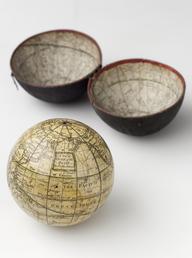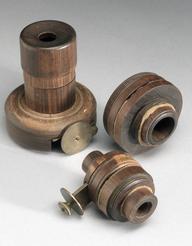

European astrolabe, 1570
- Made:
- 1565-1575 in Louvain, Flemish Brabant, Belgium and Flanders
- maker:
- Gualterus Arsenius and
- Ferdinand Arsenius

Flemisih brass planispheric astrolabe with compass and figures mounted on the Kursi with 3 plates for latitude, 39 with 42, 45 with 48 and 51 with 54 and shadow dial with unequal scale. Unsigned or dated, but probably by Arsenius, dating to around 1570-80, IC 439 [International Checklist]. A compass square is engraved on the base of the womb of the astrolabe.
Dated to around 1570--80 and unsigned, this brass astrolabe is attributed to Gualterus Arsenius a Flemish instrument maker from Louvain, Belgium. This front view shows the moveable fretwork plate called the rete that denotes star positions by short curved pointers. The astrolabe is in essence a model of the universe that an astronomer could hold in their hands. Popular in Medieval and Renaissance Europe, its many uses included timekeeping, astrology and surveying. The astrolabe is a two-dimensional depiction of the heavens whose layout is achieved using the mathematical technique of stereographic projection. From its origins in the Ancient World, Islamic astronomers developed the astrolabe from where it spread to Europe.




